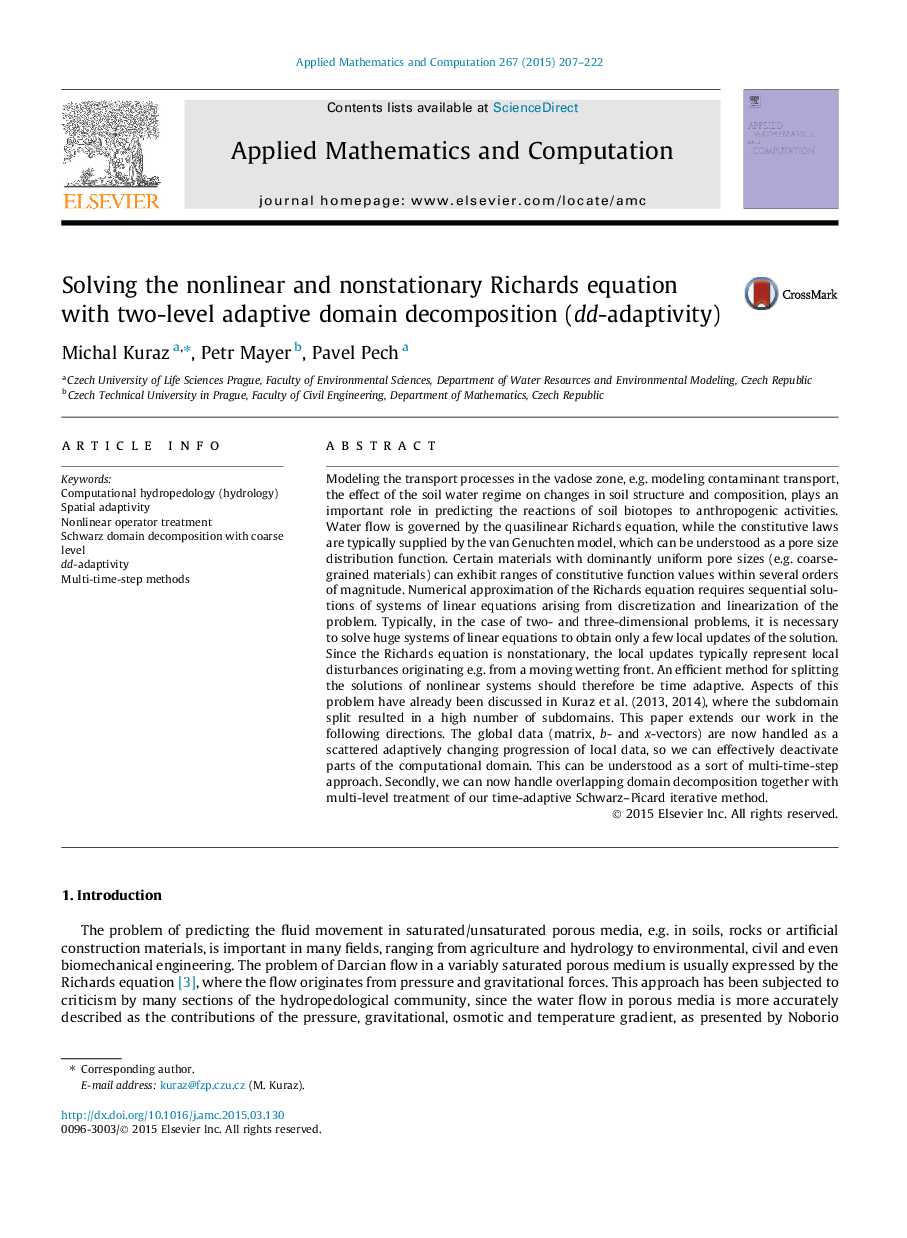| کد مقاله | کد نشریه | سال انتشار | مقاله انگلیسی | نسخه تمام متن |
|---|---|---|---|---|
| 6420263 | 1631787 | 2015 | 16 صفحه PDF | دانلود رایگان |

- Adaptive domain decomposition with sequential activation and deactivation of subdomains - multi-time-step approach.
- Construction of subdomain overlaps on adaptively changing subdomain split.
- Evaluation of coarse level effect on steady state linear and nonlinear convection diffusion type problem.
- Evaluation of coarse level effect on unsteady Richards equation with dd-adaptivity.
Modeling the transport processes in the vadose zone, e.g. modeling contaminant transport, the effect of the soil water regime on changes in soil structure and composition, plays an important role in predicting the reactions of soil biotopes to anthropogenic activities. Water flow is governed by the quasilinear Richards equation, while the constitutive laws are typically supplied by the van Genuchten model, which can be understood as a pore size distribution function. Certain materials with dominantly uniform pore sizes (e.g. coarse-grained materials) can exhibit ranges of constitutive function values within several orders of magnitude. Numerical approximation of the Richards equation requires sequential solutions of systems of linear equations arising from discretization and linearization of the problem. Typically, in the case of two- and three-dimensional problems, it is necessary to solve huge systems of linear equations to obtain only a few local updates of the solution. Since the Richards equation is nonstationary, the local updates typically represent local disturbances originating e.g. from a moving wetting front. An efficient method for splitting the solutions of nonlinear systems should therefore be time adaptive. Aspects of this problem have already been discussed in Kuraz et al. (2013, 2014), where the subdomain split resulted in a high number of subdomains. This paper extends our work in the following directions. The global data (matrix, b- and x-vectors) are now handled as a scattered adaptively changing progression of local data, so we can effectively deactivate parts of the computational domain. This can be understood as a sort of multi-time-step approach. Secondly, we can now handle overlapping domain decomposition together with multi-level treatment of our time-adaptive Schwarz-Picard iterative method.
Journal: Applied Mathematics and Computation - Volume 267, 15 September 2015, Pages 207-222